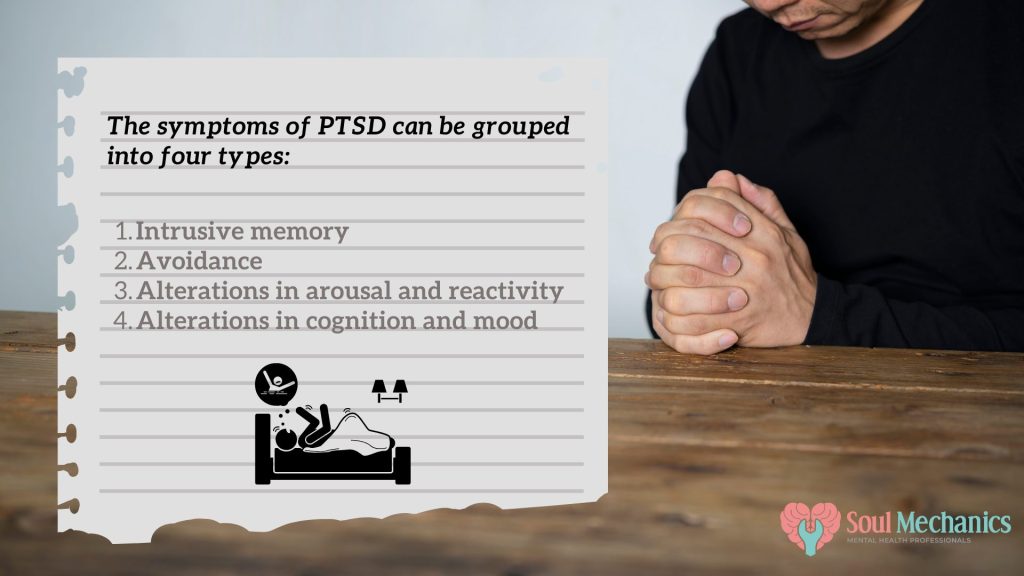(PTSD) Post Traumatic Stress Disorder
(PTSD) Post Traumatic Stress Disorder
In this blog, we will be discussing about Post Traumatic Stress Disorder, PTSD.
Experiencing an emotionally or physically harmful or life-threatening event may affect one's mental, physical, social, and even spiritual well-being. The life-threatening events may include terrorist acts, war, sexual assault, natural disasters, serious accidents, child abuse, or domestic violence. It is natural to experience a range of reactions after trauma. However, those people who continue to experience the symptoms may be diagnosed with Post Traumatic Stress Disorder (PTSD). PTSD is a mental health disorder that occurs in people that experienced or witnessed a life-threatening traumatic event. Certain aspects of traumatic incidents and biological factors like genes may make some people more likely to develop PTSD.

Symptoms of Post Traumatic Stress Disorder (PTSD)
Symptoms of PTSD normally begin within 3 months of the life-threatening event but some will emerge later. Besides, the symptoms must be unrelated to substance use, medication, or other illness. Some will recover from the symptoms within 6 months but some people have symptoms lasting for 1 year or longer. However, the symptoms may vary from person to person and vary over time. The symptoms can be grouped into four types:
1.0 Intrusive Memory
Re-experiencing is the most typical symptom of PTSD. Involuntarily and vividly relives the threatening event in the form of flashbacks, nightmares, distressing and repetitive images or sensations, and physical sensations like pain, sweating, trembling, and feeling sick. Having physical reactions and severe emotional distress to the stimulus as a reminder of the traumatic experience. Some people might have constant negative thoughts about the experience and repeatedly have self-doubt which can lead to guilt and shame.
2.0 Avoidance
Another key symptom of PTSD, avoidance is trying to avoid thoughts or feelings related to the traumatic experience by staying away from the places, objects, or situations that will remind us of the trauma. Avoid talking about the experience and trying to push the memories of the experience out of our mind. The attempt to deal with the feelings by trying not to feel anything at all is known as emotional numbing. These can lead to isolation and withdrawal, and may also give up on pursuing the activities that used to enjoy previously.
3.0 Alterations in arousal and reactivity
Arousal symptoms are often constant. It can lead to feelings like stress and anger that interfere with parts of daily life such as attention, sleeping, and eating. Feel anxious and find it difficult to relax because of constantly being aware of threats and easily startled. This may lead to feeling tense, or on edge, difficulty falling asleep or staying asleep, difficulty in focusing, feeling irritable and having angry and aggressive outbursts, and engaging in reckless, risky, or destructive behaviour.
4.0 Alterations in cognition and mood
Cognition and mood symptoms can begin or worsen after the traumatic experience. The inability to remember or recall important aspects of the event, negative thoughts, and feelings leads to ongoing and distorted beliefs about himself/ herself. Having exaggerated feelings of blaming toward oneself or others leads to ongoing negative emotions like fear, anger, guilt, or shame. Having difficulty feeling positive emotions like satisfaction and happiness. The feeling of social isolation leads to being detached from friends and family.
Conclusion
It is crucial to seek help and support when experiencing normal stress reactions. This will prevent escalation and develop into PTSD.
Let us know what other mental health disorder would you like us to write about next.
If you or someone you know is suffering from Post Traumatic Stress Disorder, feel free to reach out to us anytime here.
Follow and be a part of our mental health community where we break the stigmas attached to mental health at our official Instagram.


